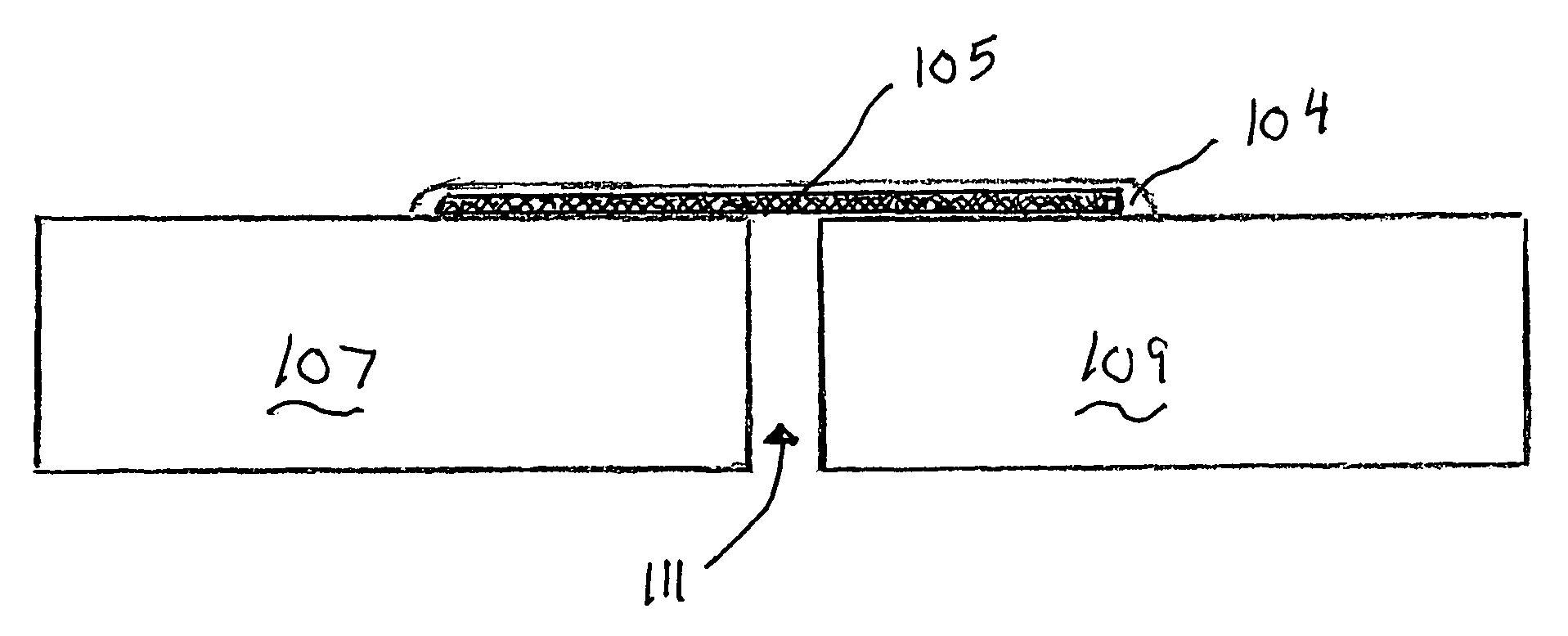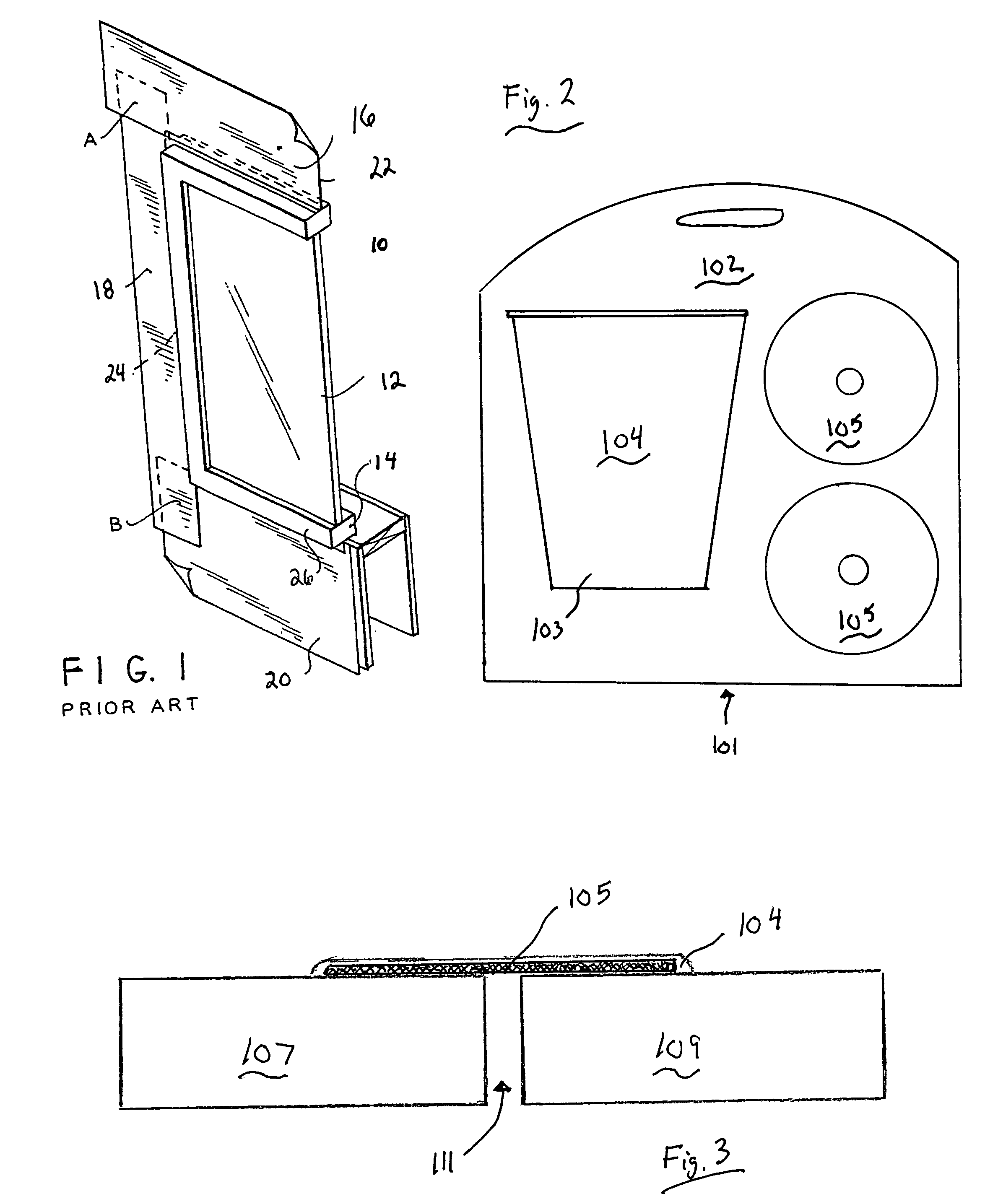Flashing material
a technology of flashing material and sealing strip, which is applied in the direction of walls, synthetic resin layered products, transportation and packaging, etc., can solve the problems of sealing strip becoming “unstuck”, self-adhesion membranes, and joints within component elements providing leakage paths
- Summary
- Abstract
- Description
- Claims
- Application Information
AI Technical Summary
Benefits of technology
Problems solved by technology
Method used
Image
Examples
Embodiment Construction
[0013]Referring now to FIG. 2, the present invention comprises a kit 101 having a housing 102 including a bucket 103 containing a sizing composition 104 and two mesh 105 rolls. The housing can be comprised of any typical packaging materials including polymeric or paper products. The sizing comprises a waterproof, water-based polymer material used in conjunction with the mesh to seal joints around window, door and other openings. The invention provides an effective water and weather resistive membrane for covering joints around window, door and other structures.
[0014]Referring now to FIG. 3, the present seal is illustrated as affixed to structural elements 107 and 109. The mesh 105, which is embedded in sizing 103 forms an effective seal over gap 111. The mesh 105 is preferably porous such that it can sufficiently embed and absorb sizing 104. A preferred mesh is comprised of a porous non-woven closed weave material. However, the skilled artisan will recognize that an open weave mater...
PUM
| Property | Measurement | Unit |
|---|---|---|
| specific gravity | aaaaa | aaaaa |
| specific gravity | aaaaa | aaaaa |
| length | aaaaa | aaaaa |
Abstract
Description
Claims
Application Information
 Login to View More
Login to View More - R&D
- Intellectual Property
- Life Sciences
- Materials
- Tech Scout
- Unparalleled Data Quality
- Higher Quality Content
- 60% Fewer Hallucinations
Browse by: Latest US Patents, China's latest patents, Technical Efficacy Thesaurus, Application Domain, Technology Topic, Popular Technical Reports.
© 2025 PatSnap. All rights reserved.Legal|Privacy policy|Modern Slavery Act Transparency Statement|Sitemap|About US| Contact US: help@patsnap.com


